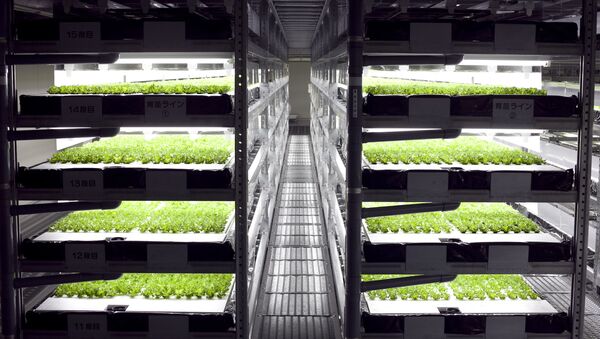Unlike other hydroponics operations, Spread's Vegetable Factory would only require human input for managing the operation and packaging the produce. Inada says that the company would keep the operation profitable, and grow 10 percent of Japan's lettuce within five years.
"The automatic green vegetable plant system is different because it allows us to grow vegetables in any place on earth," Inada told Sputnik Japan.
According to Inada, the system should not be seen as a system that would solve world hunger, although it could lead to sustainable development in agriculture.
"In addition to lettuce, it is relatively easy to grow leafy vegetables. As for the other vegetables, it is possible to grow hydroponic tomatoes, strawberries, bell peppers, and many others," Inada said.

Research in hydroponics, or the growing of plants without soil, began in the 17th century, and was first implemented by German botanists in the 19th century. Interest in the practice has risen throughout the 20th century, and the first known commercial operation was established at the US' Wake Island.
Growing plants without soil allows higher yields, as nutrients are transferred directly, and many operations from home growing enthusiasts to commercial farms have begun using them.
"The new Spread plant is unique, first of all, because of it primarily in the water recycling system, which allows us to reuse 98% of water. In addition, for the production of plants we use special LED-lamps designed to grow vegetables, as well as new technologies that can automatically carry out the entire production cycle from breeding, to seedling, to harvest. This allowed us to reduce production costs by 30%," Inada told Sputnik Japan.
He added that in the Spread plant, the robots plant the new lettuce and regulate the water and nutrient levels.
Although expenses on wages have reduced through the operations, capital expenditures have grown, which to Inada is not necessarily a bad thing, as it is money put into innovation.


